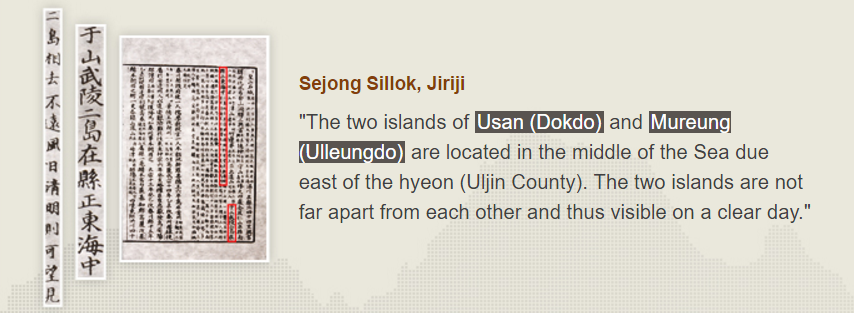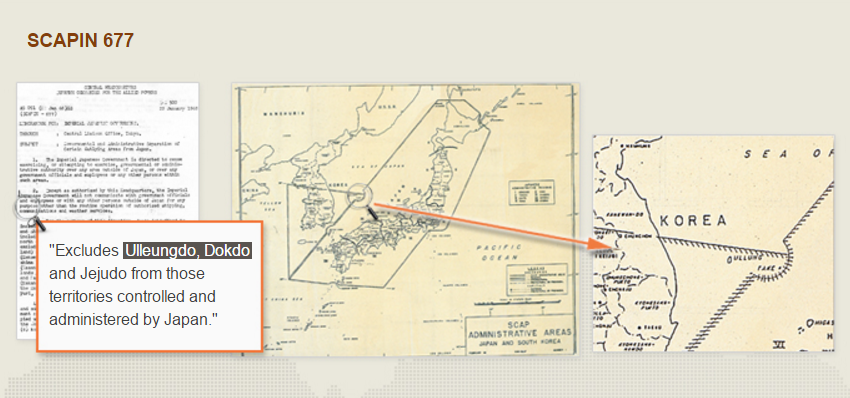Japan’s claims
- 1.“Terra nullius (nobody’s land)”
During the Russo-Japanese War, Japan claimed Dokdo was “terra nullius” and incorporated it into its own territory in order to monitor Russian ships in the East Sea.
⇒ Shimane Prefecture Public Notice No. 40 (Feb. 22, 1905) - 2. Claim of sovereignty
Having illegally incorporated Dokdo by claiming sovereignty over “terra nullius” in 1905, the Japanese government later modified its rationale in a diplomatic document, stating that it had “always been Japanese territory.” These two claims are in logical contradiction.
Historical facts
Korean records : Korean literature and maps record Dokdo as part of Korean territory since 512.
- Samguksagi (History of the Three Kingdoms) (1145) : "General Yi Sa-bu of Silla conquered Usanguk"
- Sejong Sillok, Jiriji (Geography Section of the Annals of King Sejong’s Reign) (1454) : Indicates the location of Ulleungdo and Dokdo.

- Imperial Decree No. 41 of the Empire of Korea (Oct. 25, 1900) : "All of Ulleungdo, Jukdo, and Seokdo (Dokdo) are under the jurisdiction of Uldo-gun."
Japanese records : Official documents reveal that Japan acknowledged Dokdo was not Japanese territory.
- Tottorihan’s reply to an inquiry of the Edo Shogunate (Dec. 25, 1695) : "Neither Takeshima (Ulleungdo) nor Matsushima (Dokdo) belongs to the Tottori-han."
- Dajokan Order (Mar. 29, 1877) ※ At the time, Dajokan was the highest administrative body (Grand Council of State).

Global perspectives
- The Cairo Declaration (1943) and the Potsdam Declaration (1945): "Japan will also be expelled from all other territories which she has taken by violence and greed."
- Supreme Commander for the Allied Powers Index Number (SCAPIN) 677 (1946)

| ▶01 | Dokdo is the symbol of the restoration of Korea’s sovereignty. |
| ▶02 | The world acknowledged Dokdo as a territory that was illegally seized but restored to its rightful owner. |
| ▶03 | Japan’s territorial claims over Dokdo signify that it intends to repeat its history of aggression against the Korean Peninsula. |